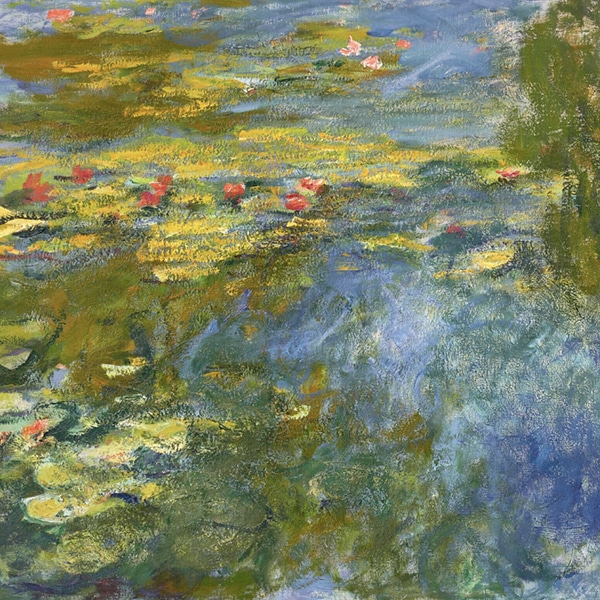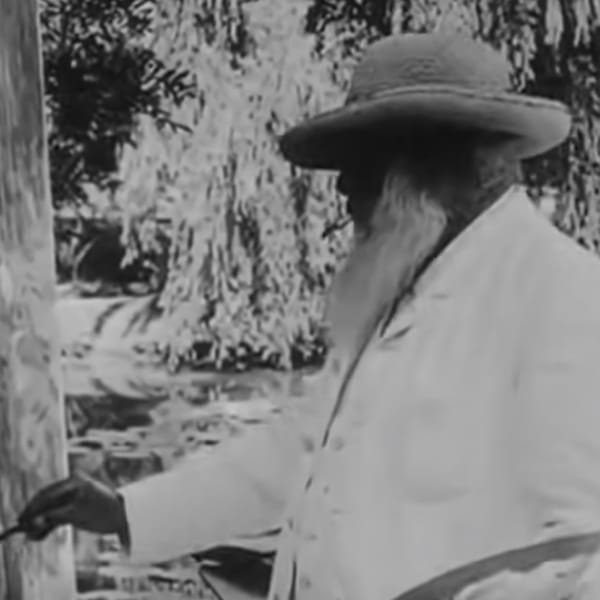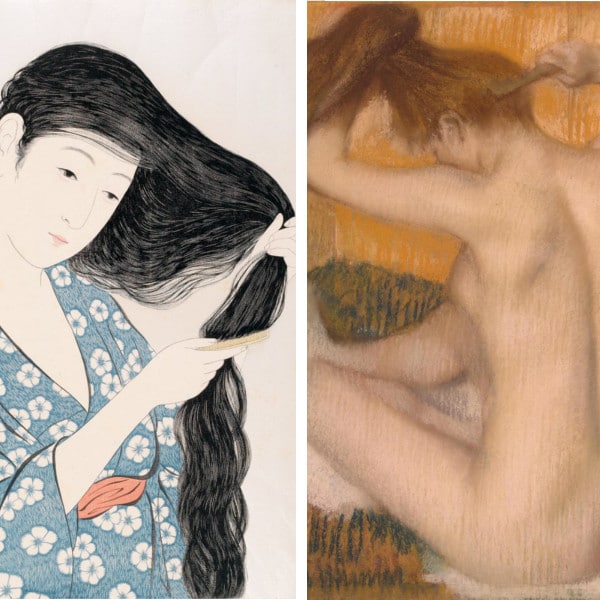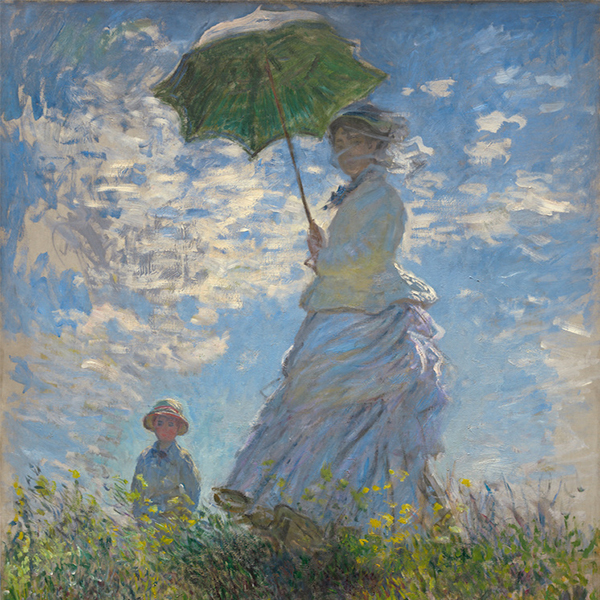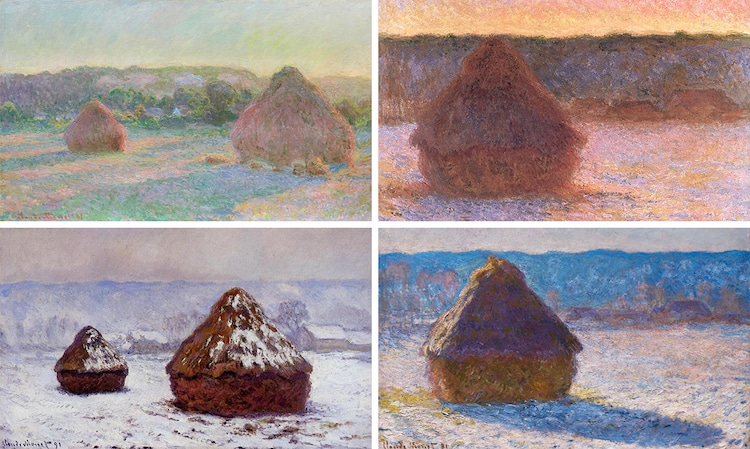
This post may contain affiliate links. If you make a purchase, My Modern Met may earn an affiliate commission. Please read our disclosure for more info.
Few painters are as widely known as Claude Monet. Although radical for the time, his expressive depictions of leisurely scenes and picturesque gardens have since charmed the world with their effortless beauty. While some of his artworks, such as the Water Lilies series, are universally known, he created many artworks over the course of his creative career. Among them is the Haystacks series.
Created over the course of nearly a year, these paintings tackled the same subject—stacks of sheaves of wheat or barley—in different conditions. This repetition allowed Monet to study the effects of light, weather, and seasons on a subject over time, resulting in a mesmerizing collection of canvases befitting his impressive oeuvre.
Here, we will explore the history and significance of Monet's Haystacks series.
Who was Monet?

Photograph of Claude Monet by Nadar, 1899 (Photo: Wikimedia Commons, Public domain)
Claude Monet (1840–1926) was a French painter who helped pioneer the Impressionist art movement in the 19th century. Born in Paris and raised in Normandy, he displayed a talent for drawing at a young age. When he was 18, Monet met artist Eugène Boudin, who introduced him to painting outdoors, or en plein air—a method that Monet would continue for the rest of his life.
As Monet matured, his painting changed from a realistic style to a somewhat looser approach, where his brushstrokes became more visible and his color palette less constrained. Then, in 1872, Monet created a depiction of a harbor in his hometown of Le Havre, entitled Impressionism, Sunrise. This iconic painting not only gave rise to the Impressionist style but also inspired the movement's now-household name.
Haystacks Series
History
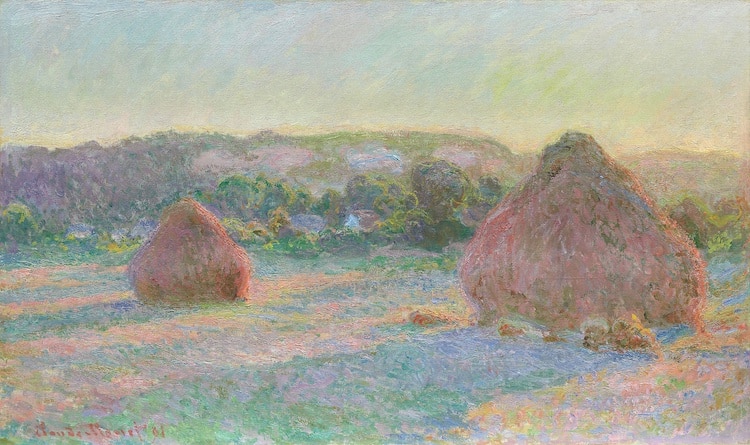
Claude Monet, “Haystacks (End of Summer),” 1890–1891 (Photo: Wikimedia Commons, Public domain)
In 1883, when Monet was in his 40s, he settled in Giverny, about 50 miles northwest of Paris. Surrounded by natural landscapes and his carefully cultivated gardens, he found inspiration for countless artworks, including his Water Lilies series and the Haystacks.
One day, Monet became intrigued by the stacks on his neighbor Monsieur Quérel's farm. Although they are now commonly referred to as haystacks, the real subjects were actually sheaves of wheat or barley that were being stored to be used later.
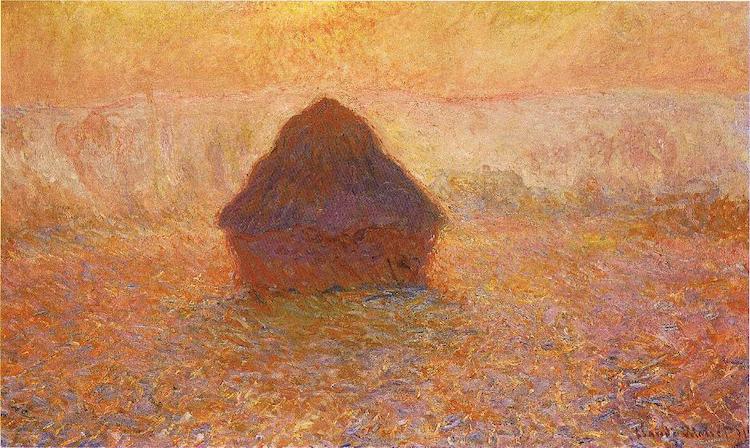
Claude Monet, “Haystacks (Sun in the Mist),” 1890–1891 (Photo: Wikimedia Commons, Public domain)
When he decided that the stacks would become his next subject, Monet sat down to paint them en plein air. Originally, he only intended to complete two canvases, however, he soon realized that he could not capture the change of light in just two paintings, so he asked his stepdaughter Blanch Hoschedé to deliver more canvases via wheelbarrow.
At the end of the day, Monet and Hoschedé would bring the supplies back to his home, where he would touch up the canvases in his studio.
Execution
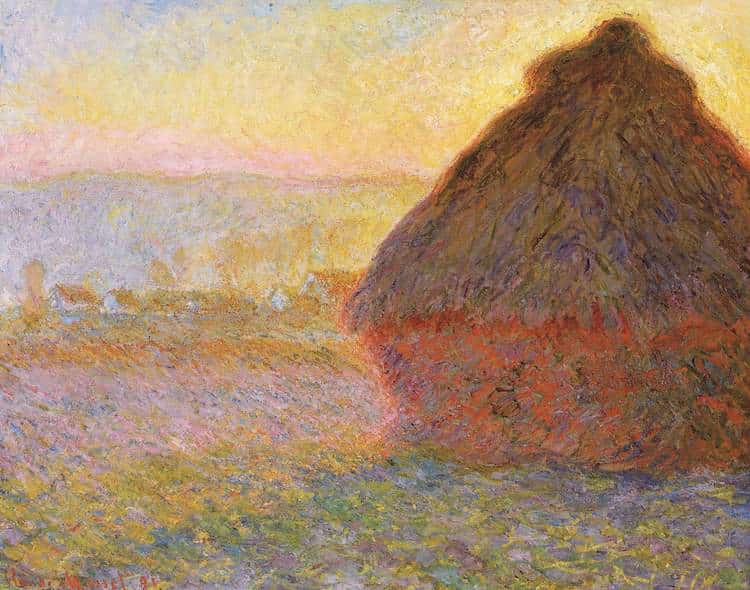
Claude Monet, “Haystacks (Sunset),” 1890–1891 (Photo: Wikimedia Commons, Public domain)
Monet began working on the Haystacks series in September or October of 1890. Each day, he would rise around 3:30 AM and carry his equipment to the sight. Then, he would work fast, using his characteristic loose brushstrokes, to complete around 10 paintings in a single sitting.
Monet alternated his work on the Haystacks series with other projects like the Water Lilies and Rouen Cathedral, so he could continue to paint while waiting for canvases to dry.
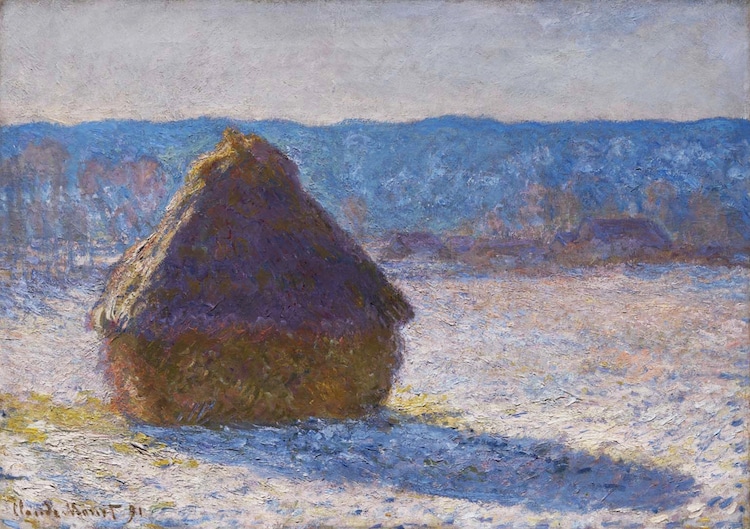
Claude Monet, “Haystacks (Morning Snow Effect),” 1890–1891 (Photo: Wikimedia Commons, Public domain)
This process continued through the different seasons until the summer of 1891 when Monet felt satisfied with their breadth of light and color.
Significance
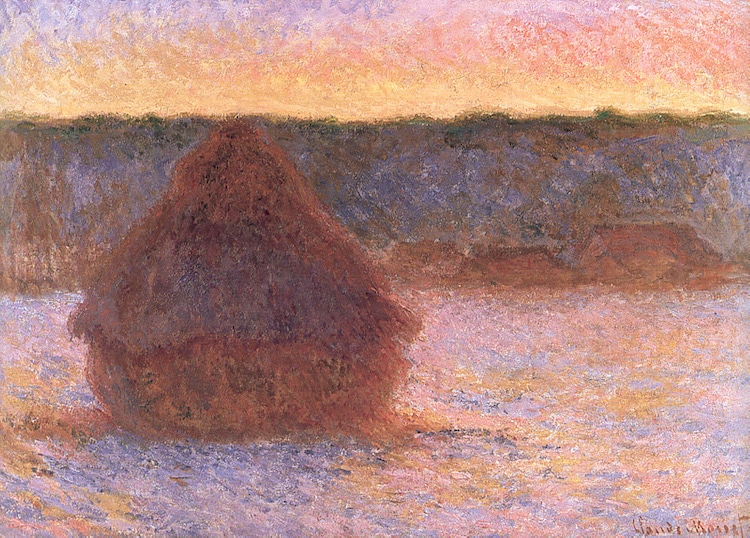
Claude Monet, “Haystacks at sunset, frosty weather,” 1890–1891 (Photo: Wikimedia Commons, Public domain)
The primary reason for painting the Haystacks series was to study the light—a theme that interested Monet and other Impressionists greatly. Depending on the time of day, the weather, and the season, the appearance of these stacks changed. Monet's expressive depictions attempted to capture these ephemeral changes and highlight the beauty of light.
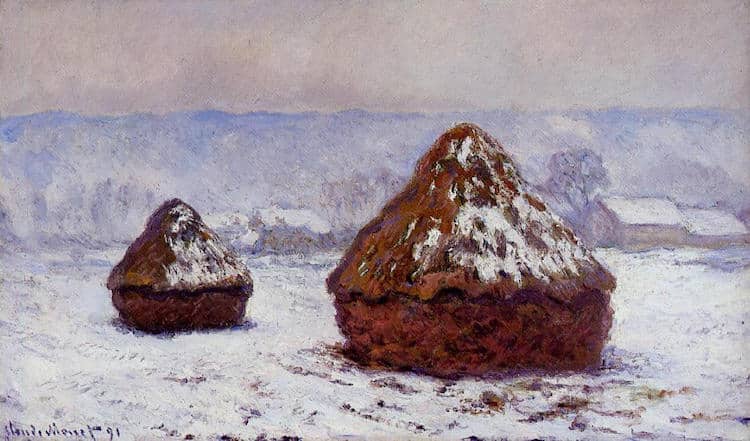
Claude Monet, “Haystacks (White Frost Effect),” 1890–1891 (Photo: Wikimedia Commons, Public domain)
Although Monet is now well known for rendering his subjects multiple times, the Haystacks series was one of his earliest projects that utilized repetition to study the slight variations over time.
Expressionist Wassily Kandinsky remarked on this series, saying, “What suddenly became clear to me was the unsuspected power of the palette, which I had not understood before and which surpassed my wildest dreams.” Fellow Impressionist Camille Pissarro added, “These canvases breathe contentment.”
Books About Monet
Frequently Asked Questions
Who painted the Haystacks?
Impressionist Claude Monet painted the Haystacks series from the fall of 1890 until the summer of 1891.
Why did Monet paint so many Haystacks?
Monet painted the Haystacks series to observe how a subject's appearance changed depending on the time of day, weather, and season.
Related Articles:
The Story and Inspiration Behind Claude Monet’s Iconic ‘Water Lilies’ Series
10+ Awe-Inspiring Impressionist Masterpieces Painted by Claude Monet
The Evolution of Landscape Painting and How Contemporary Artists Keep It Alive












































































